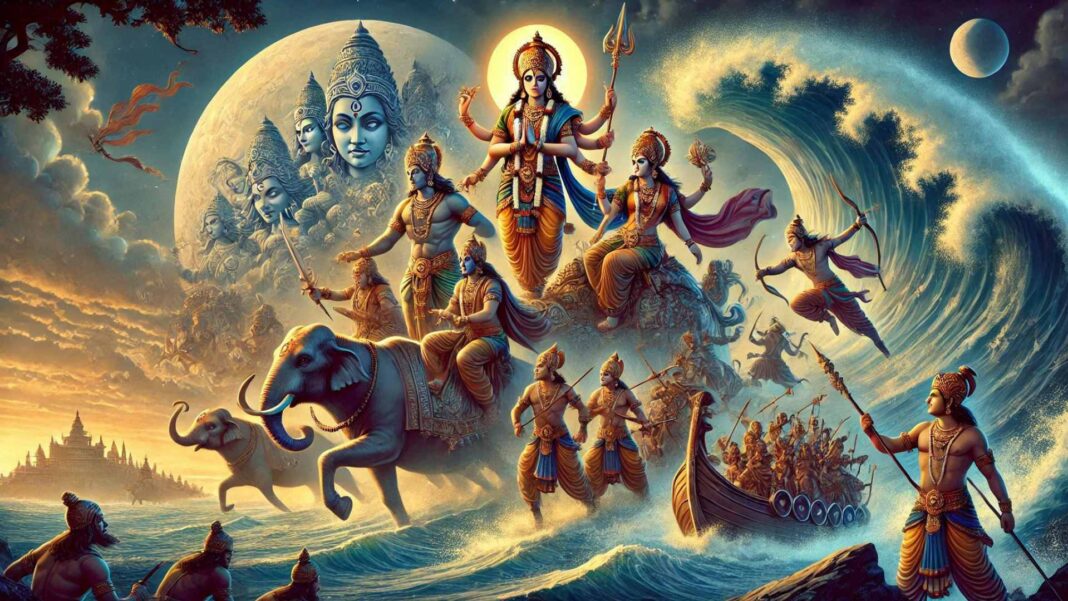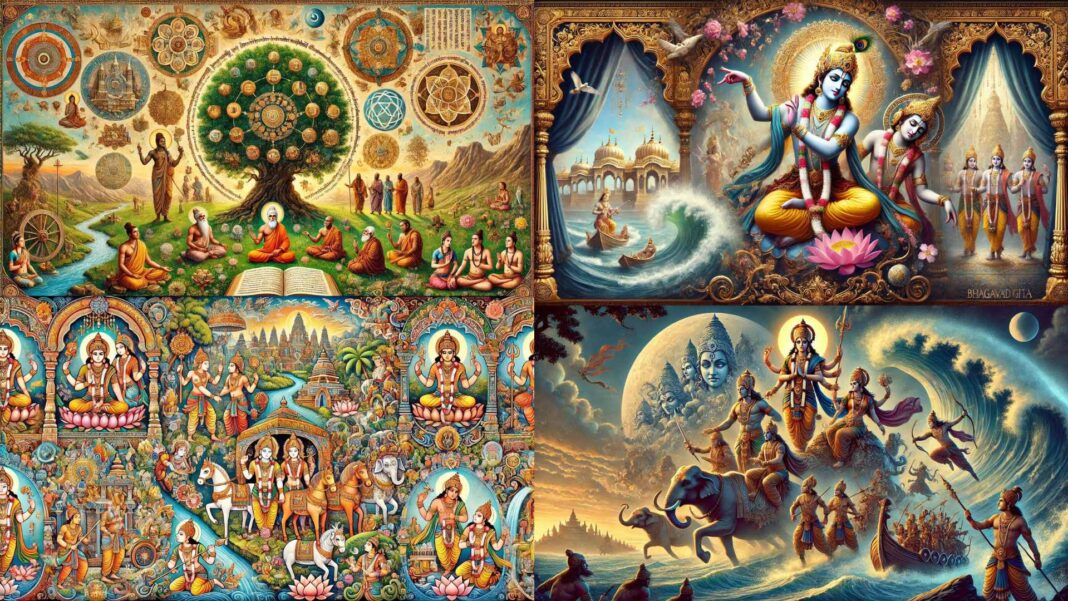The Sacred Elements of Hinduism: The Vedas, Upanishads, Bhagavad Gita, Puranas, Ramayana, and Mahabharata
Hinduism, one of the world’s oldest religions, treasures a rich repository of sacred texts and traditions that continue to shape the spiritual and cultural fabric of millions. For practitioners, these elements are not just historical relics but vibrant threads woven into daily life. Sacredness in Hinduism transcends mere reverence, becoming a lived experience that connects individuals with the divine.
Read More About sacred texts
Central to this sacred tradition are the foundational texts—the Vedas, Upanishads, Bhagavad Gita, Puranas, and the epic narratives of the Ramayana and Mahabharata. Each of these texts holds timeless wisdom, guiding spiritual evolution, ethical living, and the quest for ultimate truth.
Why do these texts and traditions matter today? They form the cornerstone of Hindu identity and provide a blueprint for navigating life’s complexities. Their universal themes—love, duty, truth, and devotion—resonate across generations, making them invaluable in modern contexts.
1. Historical Background
The Vedas:

The Vedas (Rig, Sama, Yajur, and Atharva) are considered the oldest Hindu scriptures, dating back over 3,000 years. They are the cornerstone of Hindu spirituality, encapsulating hymns, rituals, and philosophical musings. Passed down orally before being written in Sanskrit, these texts are traditionally divided into:
- Rig Veda: Hymns and praises to deities.
- Sama Veda: Musical chants.
- Yajur Veda: Ritual instructions.
- Atharva Veda: Magic spells and practical knowledge.
The Upanishads:
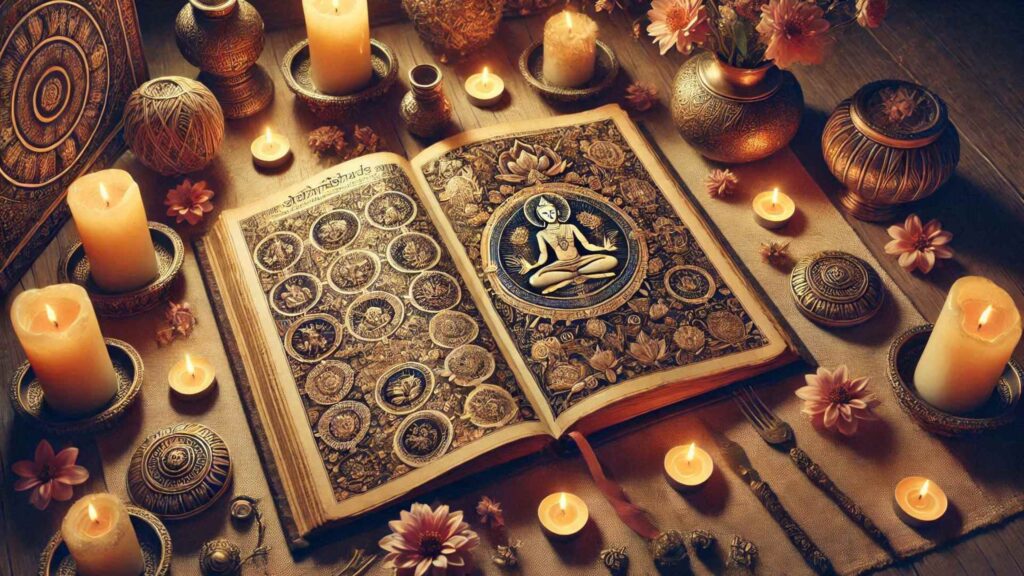
Emerging as the philosophical extension of the Vedas, the Upanishads focus on the inner essence of spirituality, exploring concepts like Brahman (universal reality) and Atman (soul). Originating between 800-500 BCE, they mark a shift from ritualistic practices to introspective wisdom.
Bhagavad Gita:
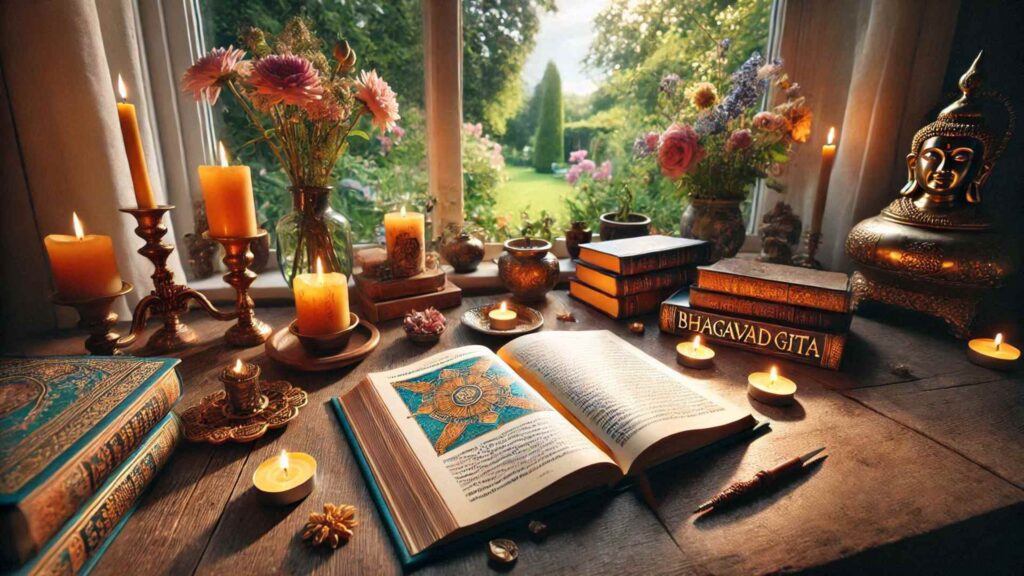
Part of the Mahabharata, the Gita is a 700-verse dialogue between Lord Krishna and the warrior Arjuna. Set against the backdrop of a battlefield, it delves into ethics, duty, and devotion, synthesizing the paths of knowledge (jnana), action (karma), and devotion (bhakti).
The Puranas:
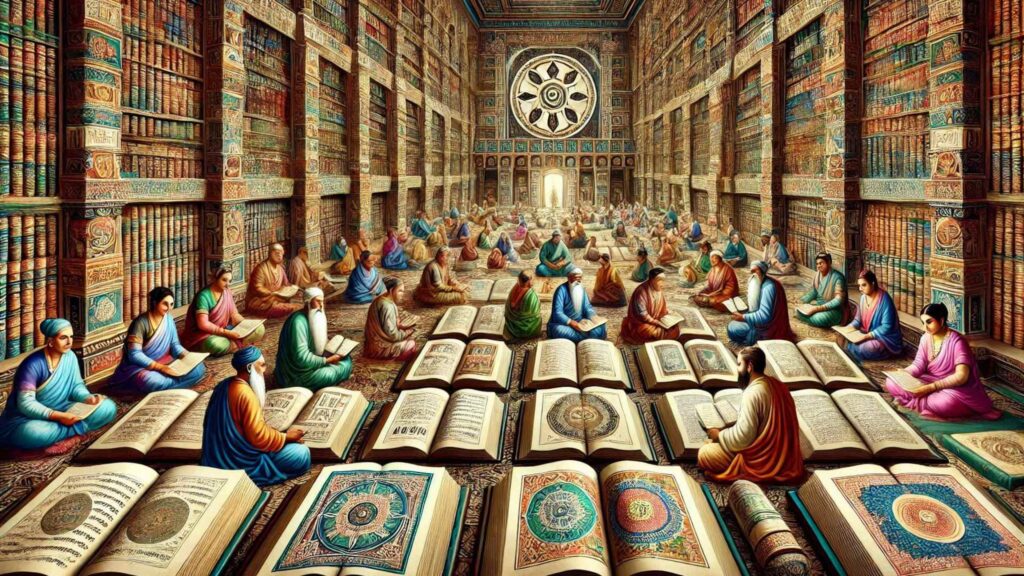
Comprising 18 major texts, the Puranas narrate stories of creation, cosmology, and the exploits of deities like Vishnu, Shiva, and Devi. They emerged during the Gupta era and serve as a bridge between Vedic and later Hindu traditions.
Ramayana and Mahabharata:
These epics, composed by Valmiki and Vyasa respectively, are more than just tales of heroism. They encapsulate dharma (righteousness) and the human struggle to uphold it in the face of challenges.
2. Spiritual Significance
Religious Importance:
The sacred texts provide a direct link to divinity, offering prayers, hymns, and rituals to commune with higher powers. Each text serves a unique purpose—whether it’s invoking deities (Vedas), gaining philosophical insights (Upanishads), or understanding life’s duties (Gita).
Symbolic Meaning:
These scriptures symbolize the eternal quest for truth. For instance:
- Rig Veda: Symbol of primordial knowledge.
- Upanishads: Metaphor for self-realization.
- Bhagavad Gita: Embodiment of moral and spiritual guidance.
Connection to Deities:
The texts are interwoven with divine figures:
- Vedas: Indra, Agni, Varuna.
- Puranas: Shiva, Vishnu, Devi.
- Epics: Rama, Krishna, Sita.
Energy and Spiritual Properties:
Chanting Vedic mantras is believed to generate vibrational energy that aligns the mind, body, and spirit, fostering inner peace and cosmic harmony.
Role in Hindu Philosophy:
Philosophical schools like Vedanta and Yoga derive their tenets from these texts, exploring themes like karma, moksha (liberation), and dharma.
3. Practical Application
In Worship:
- Vedic hymns are recited during pujas.
- The Bhagavad Gita is often read in daily prayers for inspiration.
- Puranic tales are dramatized in temple rituals and festivals.
Daily Practices:
- Chanting Gayatri Mantra (Rig Veda).
- Meditative readings of the Upanishads.
- Studying the Gita for ethical dilemmas.
Rituals and Ceremonies:
- Fire sacrifices (Yajur Veda).
- Devotional singing (Sama Veda).
- Rituals invoking ancestral blessings (Atharva Veda).
Modern Adaptations:
Texts are now available in digital formats, and apps offer daily readings. The Gita, for instance, is frequently quoted in management and self-help literature.
Home Worship:
Many families keep copies of the Gita or Ramayana at home, offering daily prayers and teaching children the values embedded in these scriptures.
4. Cultural Impact
Influence on Society:
These texts influence ethical codes, governance, and social practices. The Ramayana’s depiction of Rama as the ideal king continues to inspire leadership models.
Art and Literature:
The themes of these scriptures have inspired classical dance (Bharatanatyam), music (Carnatic compositions), and art (sculptures of deities).
Festival Connections:
- Ramayana: Celebrated during Dussehra and Diwali.
- Bhagavad Gita: Central to Janmashtami festivities.
Regional Customs:
Local interpretations, like Tulsidas’s Ramcharitmanas, adapt these texts into regional languages, making them accessible and relevant.
Contemporary Relevance:
The ethical dilemmas in the Mahabharata resonate in modern times, guiding professionals and leaders in decision-making.
5. Conservation/Preservation
Current Challenges:
- Loss of oral traditions.
- Lack of accessibility in rural areas.
- Diminishing interest among youth.
Preservation Efforts:
- Digitization of ancient manuscripts.
- Establishment of cultural heritage centers.
- Community workshops and storytelling sessions.
Environmental Aspects:
The Puranas emphasize ecological balance, advocating reverence for nature, which aligns with current sustainability movements.
Community Initiatives:
- Temple libraries.
- Online platforms promoting Hindu philosophy.
- Educational curriculums incorporating these texts.
Future Outlook:
Efforts must focus on blending technology with tradition to ensure these texts remain relevant and revered.
6. Expert Insights
Quotes from Scholars:
- “The Upanishads are the fountainhead of India’s spiritual heritage.” – Swami Vivekananda.
- “The Gita offers a philosophy of action for the modern age.” – Dr. S. Radhakrishnan.
Scientific Research:
Studies suggest that chanting Vedic mantras reduces stress and enhances cognitive functions.
Modern Interpretations:
Contemporary thinkers emphasize the universal appeal of the Gita’s message on mindfulness and self-discipline.
Expert Opinions:
Religious scholars advocate for integrating scriptural studies into modern education systems to promote holistic growth.
7. Conclusion
The Vedas, Upanishads, Bhagavad Gita, Puranas, Ramayana, and Mahabharata are not just texts but timeless reservoirs of wisdom, offering guidance for spiritual, ethical, and practical living. Their enduring relevance lies in their ability to inspire individuals to lead balanced and purposeful lives. As we preserve and cherish these sacred elements, let us invite their teachings into our daily practices.
How do these texts inspire your spiritual journey? Share your thoughts and experiences below!

